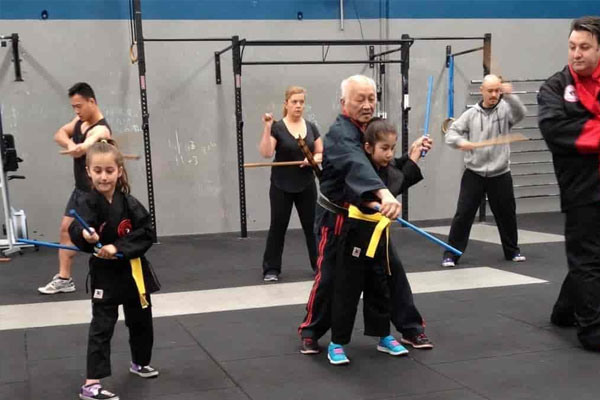Martial Arts Near Me
Eskrima
Eskrima, also known as Arnis or Kali, is a Filipino martial art that has gained global recognition for its efficiency, practicality, and fluidity of movement. Originating in the Philippines, eskrima has a rich history deeply intertwined with indigenous fighting systems and the country's colonial past. This article explores the history, techniques, and current status of Eskrima, shedding light on the cultural significance and captivating nature of this martial art.
The roots of eskrima can be traced back to the pre-colonial times in the Philippines. Indigenous tribes such as the Tausug, Ilongot, and Visayans practiced various forms of combat, which later influenced the development of eskrima. These early fighting systems were designed to protect communities and ward off invaders, incorporating weaponry and hand-to-hand combat techniques.
Eskrima also evolved due to the influence of Spanish colonization in the Philippines. The Spanish colonizers prohibited the use of traditional weapons and martial arts by the indigenous population, leading to the development of "hidden" or "deceptive" forms of eskrima. Eskrimadors (eskrima practitioners) disguised the martial art as dances or the use of ordinary objects, allowing practitioners to continue training while maintaining the appearance of harmless activities.

In the late 19th century, eskrima gained further prominence during the Filipino revolution against Spanish rule. Filipino hero and national icon, General Emilio Aguinaldo, recognized the effectiveness of eskrima as a means of resistance. He encouraged its practice and even formed a battalion of eskrima fighters to aid in the struggle for independence. Eskrima, then known as Arnis de Mano, garnered recognition as a formidable martial art during this period.
Eskrima techniques encompass a wide range of offensive and defensive maneuvers, both armed and unarmed. It places great emphasis on weapon-based combat, utilizing sticks, blades, and improvised weapons. Techniques involving sticks, known as "sinawali," involve a series of weaving and snapping strikes that train coordination and timing. Eskrima also includes intricate knife-fighting techniques that prioritize efficient and precise movements to disarm or incapacitate opponents.
Empty-hand techniques in Eskrima, known as "panantukan" or "suntukan," focus on striking and grappling techniques. Practitioners learn to utilize close-quarter combat skills to strike vital points and immobilize adversaries. Joint locks, throws, and sweeps are also incorporated, allowing for versatility in different combat scenarios.
One of the distinguishing features of Eskrima is its emphasis on fluidity and adaptability. Practitioners are trained to flow seamlessly between various techniques and weapons, making Eskrima applicable in both armed and unarmed encounters. This adaptability is showcased in the stick-fighting aspect of Eskrima, where practitioners learn to convert their techniques to empty-hand strikes or grappling when necessary.
While Eskrima has deep historical ties to indigenous Filipino culture, it has gained international recognition and popularity. Efforts by Filipino martial arts masters to promote and share Eskrima globally have led to its integration into various self-defense systems and martial art styles worldwide. Eskrima demonstrations and workshops now take place in countries such as the United States, Canada, Europe, and Australia, leading to a growing community of Eskrima enthusiasts and practitioners.
Today, different styles and variations of Eskrima exist, reflecting the individual philosophies and preferences of their respective masters. Some emphasize stick fighting, others focus on empty-hand techniques, and some incorporate the traditional weapons of the Philippines, such as knives and swords. These diverse styles allow practitioners to explore and adapt Eskrima to their own needs and preferences.
In the Philippines, Eskrima is not only practiced as a martial art but also as a cultural heritage. Authorities place great emphasis on preserving and promoting the martial art by integrating it into school curricula, organizing national competitions, and recognizing Eskrima masters. The Philippine government, recognizing the historical and cultural significance of Eskrima, has even declared October 27th as National Arnis Day.
From its indigenous roots to the adaptation and integration into various martial art systems worldwide, Eskrima stands as a testament to the ingenuity and adaptability of Filipino martial arts. The fluidity of movement, emphasis on adaptability, and practicality make Eskrima an art form that continues to captivate practitioners and audiences alike, preserving its place in martial arts history.